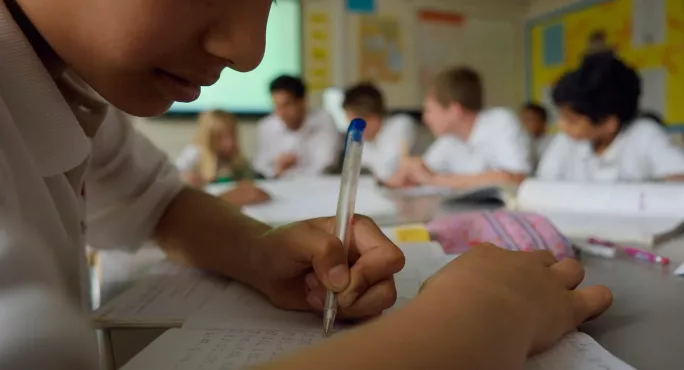- Home
- Exclusive: Huge variation in MAT schools’ Ofsted ratings
Exclusive: Huge variation in MAT schools’ Ofsted ratings

New figures published today show a huge variation in the performance of multi-academy trusts in Ofsted school inspections.
Tables reveal for the first time a breakdown of MAT-level performance in judgements from the inspectorate.
They show a total of 13 primary trusts and the same number of secondary trusts where more than half of their schools are rated “inadequate” or “requires improvement” - Ofsted’s two lowest ratings.
Primary table: How MATs perform in primary Ofsted inspections
Secondary table: How MATs perform in secondary Ofsted inspections
Progress: MATs score below national average on Progress 8
By contrast large numbers of trusts have all their schools rated “good” or better. The tables have been published today by Education Datalab.
Philip Nye, who produced the research said: “The main conclusion is that there is a big variation in the performance of MATs, as measured by inspection judgements.
“I think it is something else which shows that joining a multi-academy trust is not necessarily a silver bullet for school improvement across the board.
“I think the results could also add to the calls for Ofsted to be able to carry out MAT level inspections.
“Both the current and previous chief inspectors have wanted the power to inspect multi-academy trusts, but have found themselves thwarted by the Department for Education.”
The findings may raise questions over new calls to move to a system where all schools are run by academy trusts.
Writing for Tes, Confederation of School Trusts chief executive, Leora Cruddas, outlined plans for a new “white paper” in which all schools have academy status.
Today’s new tables break down the Ofsted ratings of trusts’ primary and secondary schools.
At primary level, just over half of trusts - 117 out of 232 - have all their schools rated “good” or better.
However, there are 42 trusts where more than a third of pupils are in schools which require improvement or are “inadequate”.
MATs perform slightly less well in Ofsted secondary school inspections.
At almost two-fifths of trusts - 30 out of 80 all schools - are judged to be “good” or better.
However, there are 28 trusts where more than a third of pupils are in schools rated less than “good”.
The research is based on the DfE’s own MAT league table methodology and only includes schools which have been with a trust for three years or more.
It also reveals there are nine multi academy trusts that closed or had all of their schools rebrokered in 2017-18.
This includes Bright Tribe, Wakefield City Academies Trust and Perry Beeches the Academy Trust.
Of the 1,883 academies included in the DfE’s MAT league tables, 84 have either closed or been rebrokered.
Geoff Barton, general secretary of the Association of School and College Leaders said those MATs with a spread of schools with different Ofsted judgements was actually an indication that “a fledgling system with the spirit of partnership was working”.
“I would be more concerned if the data showed MATs were only cherrypicking the best schools,” he said. “What this seems to indicate is that there are trusts taking on schools which need support.”
Mr Barton also questioned whether Ofsted should do MAT level inspections.
“I think it is useful to look at this data to ask questions but a MAT is a governance arrangement. It is trustees. How would Ofsted inspect this? Would it be about inspecting the way trustees hold leaders to account. I am not convinced this would be a good use of public resources.”
The tables also show the average progress scores for each primary and secondary school in a MAT.
Mr Nye said there was some correlation between the proportion of schools judged to be “good” in a MAT and how strong a trust’s progress score is - with the link being stronger at secondary level.
But at primary, 68 out of 156 - where at least 80 per cent of schools were rated “good” or better - had a negative progress score for reading.
A Department for Education spokesperson said: “Each year hundreds of schools make the positive choice to convert to academy status - giving great teachers the freedom to focus on what is best for pupils, as well as more autonomy.
“There are more than half a million children studying in sponsored primary and secondary academies that are now rated good or outstanding, with standards rising faster in many sponsored academies than in similar council-run schools.”
Since 2010 around 8,000 schools have been converted to academies.
Keep reading for just £1 per month
You've reached your limit of free articles this month. Subscribe for £1 per month for three months and get:
- Unlimited access to all Tes magazine content
- Exclusive subscriber-only stories
- Award-winning email newsletters



